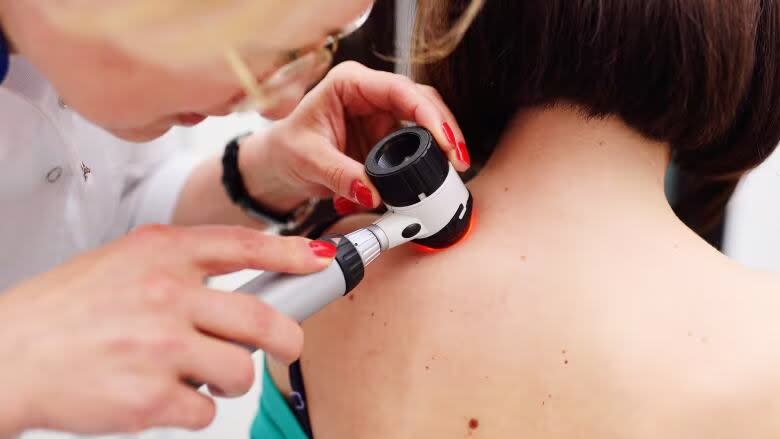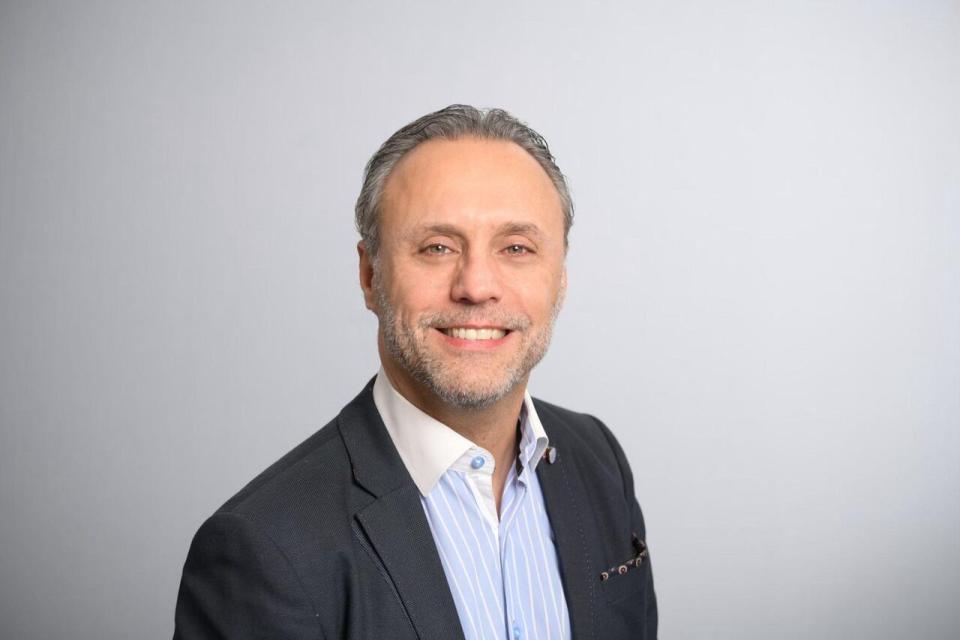Why is it so hard to see a dermatologist in Quebec?

Nearly 100,000 Quebecers are waiting for a dermatology consultation, the longest wait-list of any medical specialty.
According to the Health Ministry, 93,000 consultation requests were made for dermatology between April 1, 2023, and March 31, 2024. The average wait time for these patients was 198 days, with a median of 81 days.
On social media community discussion groups, it's not uncommon to see people asking for help in finding a dermatologist, with most turning to the private sector if they want to be seen quickly.
"We're definitely headed in the wrong direction and it's going to get worse", said Dr. Ivan Litvinov, director of dermatology at the McGill University Health Centre (MUHC).
About 200 dermatologists work in the public system, which he says is not enough for a population of nearly nine million that is welcoming tens of thousands of newcomers each year.
The COVID-19 pandemic contributed to the backlog of patients, said Litvinov, but a number of other factors are also at play.
Part of it is due to a growing preference for a better work/life balance from doctors. Gone are the days where doctors would work 12-hour days and see a high volume of patients, said Litvinov.

Dr. Ivan Litvinov is the director of the dermatology at the McGill University Health Centre. He says there are not enough dermatologists to meet the demand in Quebec and expects the wait list will only get worse. (McGill University)
There are also more women working in the profession with young children.
"They want to go pick up their kids at daycare,' he said. "They don't need to make as much money as before."
Pay is another challenge.
Even if a specialist wanted to have more of a medical dermatology practice, it's not practical because consultation fees have remained stagnant for the past 10 years, said Litvinov.
Many dermatologists work in clinics and pay for office space, nurses, support staff and other overhead, which is all getting more expensive. It's leading some to take on a larger share of more lucrative cosmetic work — leaving less space for medical consultations.
Those procedures could include botox, fillers, laser treatments and removing unwanted moles.
Trying to find solutions will be a major challenge.
"Numerous diseases in dermatology if left untreated are progressive and the damage cannot be reversed if caught too late," said Litvinov.
More urgent cases prioritized
Of the approximately 100,000 people waiting to see a dermatologist, about 60 per cent have exceeded the recommended wait time, which the Canadian Cancer Society (CCS) finds worrying.
As the population ages, the risk of skin cancer goes up.
More than 2,500 Quebecers are expected to be diagnosed with melanoma this year, said David Raynaud, CCS' senior advocacy manager.
Although skin cancer is highly treatable if caught early, the patient's family doctor determines the priority level, which ranges from A to E — with E being the least urgent.
If a doctor suspects cancer, "technically, you should see a dermatologist faster than some other conditions that are less of a priority," said Raynaud. "But it's not perfect."

In regions with few dermatologists, the province is looking at virtual options. (Monty Kruger/CBC)
Dr. Catherine Besner Morin is the president of the association of dermatologist specialists of Quebec. She says the association is working with the government to find ways to improve access.
"We're not in control of how many consultations we get. We're only in control of how many we do," said Besner Morin.
But more and more, the cases dermatologists see are more complex, so appointments take longer and dermatologists can't see the same volume of patients they used to, she said.
If cases are prioritized properly, more urgent cases are usually dealt with in a reasonable period of time.
"It's important that if the condition changes, the patient should tell their primary physician that it has gotten worse and that way, they can change the order of prioritization," said Besner Morin.
Teledermatology reducing in-person visits
For decades, Besner Morin said the number of spots open to train dermatologists in Quebec was too low. She was part of the cohort where the province began to increase the number of admissions, but it will take time to correct.
While Greater Montreal has good coverage, other regions including Quebec City and Mauricie don't have enough dermatologists.
For those regions, Besner Morin says they are trying to help patients through teledermatology.
A virtual platform was started in July 2022. Consultation requests are made by general practitioners who send photos of skin lesions along with clinical information which allows a dermatologist to make a diagnosis remotely. Treatment and follow-up are carried out by the family doctor.
"Access to this service for GPs has already significantly reduced waiting times for several thousand patients," said Health Ministry spokesperson Marie-Pierre Blier in an email.
Since the inception of the service, only 21 per cent of requests have required a face-to-face referral following the virtual consultation.
The dermatology association also tried a pilot project to remove patients from the specialist waiting list who were referred for a cosmetic procedure. In the region where it was tested out, those cases accounted for about 12.5 per cent of patients on the list.
"At this point, everything helps," said Besner Morin.
Shift in mentality
Dr. Samer Daher, president of the Montreal Association of General Practitioners, said family doctors routinely see patients who have skin issues. Most don't need to see a specialist.
The problem, he said, is many people are used to having a dermatologist who will follow them for life, which is not possible given the demand.

Dr. Samer Daher is the president of the Montreal Association of General Practitioners. He says many patients insist on seeing a dermatologist even when it's not necessary. (Élyanthe Nord/FMOQ)
"Most of the time, we tell them, you don't need to see a dermatologist, but they won't stop," said Daher. "They will go see another doctor and a third doctor and a fourth doctor until they get their paper because they're convinced this is the way the health system should be run."
Daher said this creates a lot of useless appointments which clog an already overburdened system.
Daher said family doctors and clinical nurses can handle common concerns such as rashes, eczema or suss out if a troublesome mole needs to be looked at more closely. If it's outside the doctor's comfort level or experience, Daher said the doctor will make a referral.
Besner Morin agrees and says if a patient requires a dermatologist's expertise, once a diagnosis is made and a treatment plan in place, follow-up should be done with the primary care physician.


